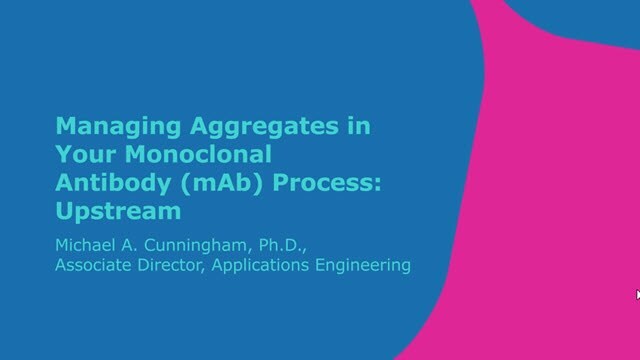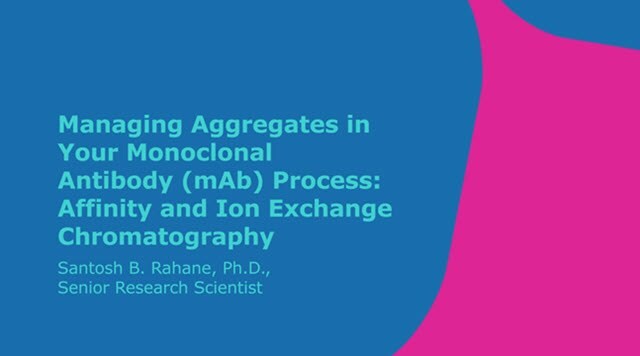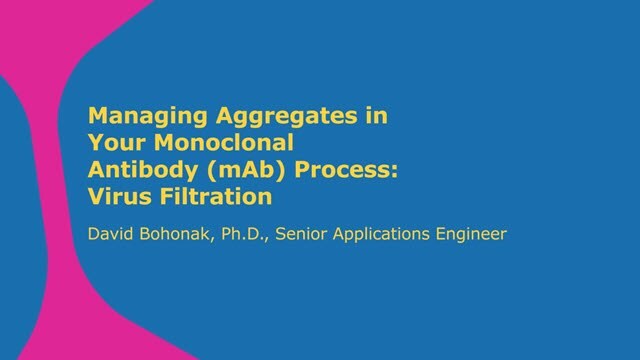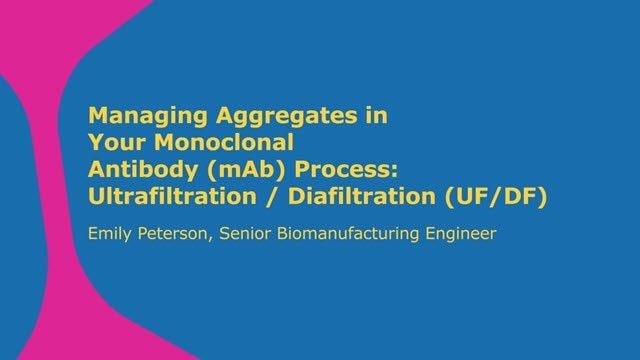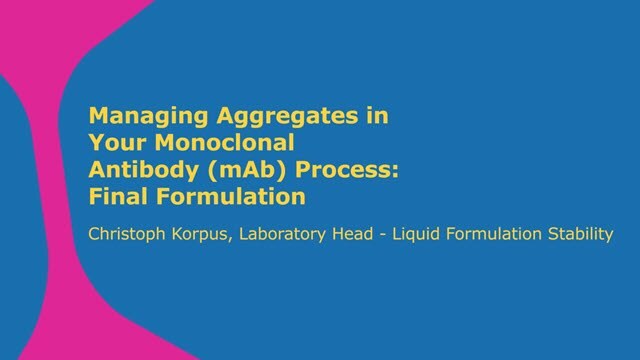检测和去除聚集体
生物产品(例如单克隆抗体(mAb))在生产过程中容易发生蛋白聚集。这会给生产环境带来挑战,从而影响纯化操作的效率。并且,它还可能会导致患者对药物安全产生担心;高水平的聚集会过度刺激患者的免疫系统,从而导致不良反应。由于这些原因,药品中的聚集水平被认为是关键的质量属性,整个上游和下游加工过程中的聚集控制都是生物制造商所关注的领域。
聚集体是通过永久或可逆地结合在一起的多个蛋白分子(多聚体)形成的。它们的范围从少至两个到多个相关的蛋白质分子。
聚集的控制始于上游的克隆选择,然后在下游中小心控制捕获色谱的洗脱和在低pH值病毒灭活步骤中的孵育。赋形剂和稳定剂可用于尽可能地减少聚集体形成,而下游的色谱步骤可用于有效去除聚集体。聚集体的存在会严重影响某些下游操作(例如病毒过滤)的效率,并且过程中通常会使用吸附式预过滤来尽可能减小批次间的差异性,并增强过程的稳定性。
减少聚集体形成的方法包括:
- 分子和细胞系操纵
- 仔细选择过程耗材和赋形剂
- 工艺参数的优化与控制
在灵活性和上市速度日益重要之际,尽可能的减少聚集可提高工艺的效率。
工作流程

上游
The upstream process begins with cell line development and includes all steps up to cell harvest, with the goal of increasing cell densities and product titers to maximize mAb production
下游
From cell harvest through final filling into vials, the comprehensive focus of downstream bioprocessing is on purification while controlling bioburden and assuring viral safety, in order to provide confidence in drug safety for patients
制成品过滤和灌装
Final filling of drug products must meet stringent requirements for sterility, integrity, cleanliness, operational safety, and efficiency
病毒安全性
Based on the principles of “prevent, detect, and remove,” viral safety combines risk analysis with careful selection of raw materials, extensive testing of raw materials and process intermediates, and implementation of virus reduction steps in downstream processing
微生物含量控制
All mAb production processes are at risk for microbial contamination, requiring a process design with control strategies to mitigate the risk, as well as bioburden monitoring to assure process control
如要继续阅读,请登录或创建帐户。
暂无帐户?